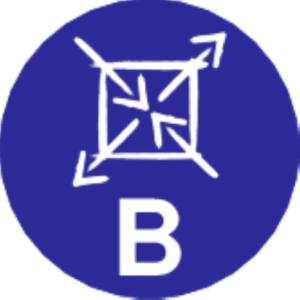B3: Dynamics of rare-earth-based frustrated magnets
Philipp Gegenwart, Alexander Tsirlin, Astrid Schneidewind
Triangular and kagome magnets serve as an experimental platform for realizing entangled spin states, including the long-sought quantum spin liquid. In this project, we will prepare candidate materials containing rare-earth metals as magnetic ions and comprehensively study their spin dynamics for a direct experimental witness of the underlying entanglement. We will further address the dichotomy between structurally disordered and quantum disordered states and reveal the effect of structural randomness on the quantum spin liquid.
Publications
2025 |
|
Telang, P.; Treu, T.; Klinger, M.; Tsirlin, A. A.; Gegenwart, P.; Jesche, A. Adiabatic demagnetization refrigeration with antiferromagnetically ordered NaGdP2O7 Journal Article Phys. Rev. B 111, 064431 (2025). @article{telang_adiabatic_2025, |  |
2024 |
|
Tang, N.; Gen, M.; Rotter, M.; Man, H.; Matsuhira, K.; Matsuo, A.; Kindo, K.; Ikeda, A.; Matsuda, Y.; Gegenwart, P.; Nakatsuji, S.; Kohama, Y. Crystal field magnetostriction of spin ice under ultrahigh magnetic fields Journal Article Phys. Rev. B 110, 214414 (2024). @article{tang_crystal_2024,We present a comprehensive study of the magnetoelastic properties of the Ising pyrochlore oxide Ho2Ti2O7, known as spin ice, by means of high-field magnetostriction measurements and numerical calculations. When a magnetic field is applied along the crystallographic ⟨111⟩ axis, the longitudinal magnetostriction exhibits a broad maximum in the low-field regime around 30 T, followed by a dramatic lattice contraction due to crystal-field (CF) level crossing at 𝐵cf∼65 T. The transverse magnetostriction exhibits a contrasting behavior, highlighting the anisotropic nature of the CF striction. By applying a magnetic field at varying sweep rates, we identify distinct timescales of spin dynamics that are relevant to monopole formation and annihilation, as well as CF-phonon dynamics. Our mean-field calculations, based on a point-charge model, successfully reproduce the overall magnetostriction behavior, revealing the competition between the exchange striction and CF striction. A signature of the CF level crossing is also observed through adiabatic magnetocaloric-effect measurements, consistent with our magnetostriction data. |  |
Shen, B.; Breitner, F.; Gegenwart, P.; Jesche, A. Strong Enhancement of Magnetic Coercivity Induced by Uniaxial Stress Journal Article Phys. Rev. Lett. 133, 186702 (2024). @article{shen_strong_2024,The performance of permanent magnets is intricately tied to their magnetic hysteresis loop. In this study, we investigate the heavy-fermion ferromagnet CeAgSb2 through magnetization measurements under uniaxial stress. We observe a 2400% increase in magnetic coercivity with just a modest stress of approximately 1 kbar. This effect persists even after pressure release, attributable to stress-induced defects that efficiently pin domain walls. Other magnetic properties such as ordering temperature and saturation moment exhibit only weak pressure dependencies and display full reversibility. Our findings offer a promising route for increasing coercive field strength and enhancing the energy product in ferromagnetic materials and are potentially applicable to a broad spectrum of commercial or emerging magnetic applications. |  |
Solana-Madruga, E.; Mentre, O.; Tsirlin, A. A.; Huve, M.; Khalyavin, D.; Ritter, C.; Arevalo-Lopez, A. M. CoVO3 High-Pressure Polymorphs: To Order or Not to Order? Journal Article Adv. Sci. 11, 2307766 (2024). @article{solana-madruga_covo_3_2023,Materials properties are determined by their compositions and structures. In ABO(3) oxides different cation orderings lead to mainly perovskite- or corundum like derivatives with exciting physical properties. Sometimes, a material can be stabilized in more than one structural modification, providing a unique opportunity to explore structure-properties relationship. Here, CoVO3 obtained in both ilmenite-(CoVO3-I) and LiNbO3-type (CoVO3-II) polymorphs at moderate (8-12 GPa) and high pressures (22 GPa), respectively are presented. Their distinctive cation distributions affect drastically the magnetic properties as CoVO3-II shows a cluster-glass behavior while CoVO3-I hosts a honeycomb zigzag magnetic structure in the cobalt network. First principles calculations show that the influence of vanadium is crucial for CoVO3-I, although it is previously considered as non-magnetic in a dimerized spin-singlet state. Contrarily, CoVO3-II shows two independent interpenetrating antiferromagnetic Co- and ferromagnetic V-hcp sublattices, which intrinsically frustrate any possible magnetic order. CoVO3-II is also remarkable as the first oxide crystallizing with the LiNbO3-type structure where both metals contain free d electrons. CoVO3 polymorphs pinpoint therefore as well to a much broader phase field of high-pressure A-site Cobaltites. |  |
Zhao, K.; Tokiwa, Y.; Chen, H.; Gegenwart, P. Discrete degeneracies distinguished by the anomalous Hall effect in a metallic kagome ice compound Journal Article Nat. Phys. 20, 442 (2024). @article{zhao_discrete_2024,In magnetic crystals, despite the explicit breaking of time-reversal symmetry, two equilibrium states related by time reversal are always energetically degenerate. In ferromagnets, this time-reversal degeneracy is reflected in the hysteresis of the magnetic field dependence of the magnetization and, if metallic, in that of the anomalous Hall effect (AHE). Under time-reversal, both these quantities change signs but not their magnitude. Here we show that a time-reversal-like degeneracy appears in the metallic kagome spin ice HoAgGe when magnetic fields are applied parallel to the kagome plane. We find vanishing hysteresis in the field dependence of the magnetization at low temperature, but finite hysteresis in the field-dependent AHE. This suggests the emergence of states with nearly the same energy and net magnetization but different sizes of the AHE and of the longitudinal magnetoresistance. By analysing the experimental data and a minimal tight-binding model, we identify a time-reversal-like operation connecting these near-degenerate states, which is related to the non-trivial distortion of the kagome lattice in HoAgGe. Our work demonstrates the diagnostic power of transport phenomena for identifying hidden symmetries in frustrated spin systems. Transport measurements of the metallic kagome spin ice HoAgGe show that it has an emergent discrete symmetry that is not apparent from measurements of its magnetization. |  |
2023 |
|
Mohanty, S.; Islam, S. S.; Winterhalter-Stocker, N.; Jesche, A.; Simutis, G.; Wang, Ch.; Guguchia, Z.; Sichelschmidt, J.; Baenitz, M.; Tsirlin, A. A.; Gegenwart, P.; Nath, R. Disordered ground state in the spin-orbit coupled Jeff = 1/2 distorted honeycomb magnet BiYbGeO5 Journal Article Phys. Rev. B 108, 134408 (2023). @article{mohanty_disordered_2023,We delineate quantum magnetism in the strongly spin-orbit coupled distorted honeycomb lattice antiferromagnet BiYbGeO5. Our magnetization and heat capacity measurements reveal that its low-temperature behavior is well described by an effective J(eff) = 1/2 Kramers doublet of Yb3+. The ground state is nonmagnetic with a tiny spin gap. Temperature-dependent magnetic susceptibility, magnetization isotherm, and heat capacity can be modeled well assuming isolated spin dimers with anisotropic exchange interactions J(Z) similar or equal to 2.6 K and J(XY) similar or equal to 1.3 K. Heat capacity measurements backed by muon spin relaxation suggest the absence of magnetic long-range order down to at least 80 mK both in zero field and in applied fields. This sets BiYbGeO5 apart from Yb2Si2O7, with its unusual regime of magnon Bose-Einstein condensation, and suggests negligible interdimer couplings, despite only a weak structural deformation of the honeycomb lattice. |  |
Bader, V. P.; Ritter, C.; Papke, E.; Gegenwart, P.; Tsirlin, A. A. Geometrical frustration and incommensurate magnetic order in Na3RuO4 with two triangular motifs Journal Article Phys. Rev. B 108, 144424 (2023). @article{bader_geometrical_2023, |  |
